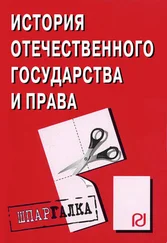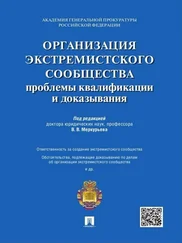Achyut Yagnik, Communal Riots in Hyderabad – What the People Say (Ahmedabad: SETU Centre for Social Knowledge and Action, 1984), 13; Ursula Rao, «Contested Spaces. Temple Building and the Re-creation of Religious Boundaries in Contemporary Urban India», in On the Margins of Religion, Frances Pine and Joao Pina-Cabral, eds. (Oxford: Berghahn, 2008), 82–83.
Rao, «Contested Spaces. Temple Building and the Recreation of Religious Boundaries in Contemporary Urban India», 83.
Тем не менее есть указания на то, что пространственные практики религиозных групп служат одной из причин для повторяющихся конфликтов между ними; подробнее см.: Ratna Naidu, Old Cities, New Predicaments: A Study of Hyderabad (New Delhi: Sage Publications, 1990), 205–206 and Sudhir Kakar, The Colors of Violence: Cultural Identities, Religion, and Conflict (Chicago: University of Chicago Press, 1996), 13–14.
Ostrom, Governing the Commons, 90–91; Остром Э . Управляя общим… С. 178–180.
Sudipta Kaviraj, «Filth and the Public Sphere: Concepts and Practices about Space in Calcutta», Public Culture 10, № 1 (1997): 86.
William J. Glover, «Construing Urban Space as „Public“ in Colonial India: Some Notes from the Punjab», Journal of Punjab Studies 14, № 2 (2007): 212.
Sara Dickey, «Permeable Homes: Domestic Service, Household Space, and the Vulnerability of Class Boundaries in Urban India», American Ethnologist 27, № 2 (2000): 470.
Partha Chatterjee, The Nation and its Fragments: Colonial and Postcolonial Histories (Princeton: Princeton University Press, 1993), 121.
Kaviraj, «Filth and the Public Sphere», 94.
Greater Hyderabad Municipal Corporation (GHMC), «Policy on Simplification of Regulation of Street Vending/Hawking in MCH area», Hyderabad: GHMC, 2006; http://www.ghmc.gov.in/approvedplans/hawkers_notification.pdf (accessed Aug 22, 2013).
Hyderabad Metropolitan Development Authority (HMDA), «Metropolitan Development Plan-2031 for Hyderabad Metropolitan Region», Hyderabad: HMDA, 2013; http://220.227.252.236/ehmr/PDFDownload/45X42_1,00,000%20scale%20PLU.pdf (accessed Aug 22, 2013).
Интервью с уличным торговцем сумками для шопинга, 7 ноября 2012; Интервью с владельцем транспортного магазина № 2, 19 ноября 2012.
Kaviraj, «Filth and the Public Sphere», 84.
Elisa T. Bertuzzo, Fragmented Dhaka: Analysing Everyday Life with Henri Lefebvre’s Theory of Production of Space (Stuttgart: Franz Steiner Verlag, 2009), 31.
Harvey, Rebel Cities, 75.
Интервью с владельцем киоска со жвачками паан, 2 ноября 2012.
Manderscheid, «Automobilität als raumkonstituierendes Dispositiv der Moderne», 159.
Ostrom, Governing the Commons, 101; Остром Э . Управляя общим… С. 181.
Partha Chatterjee, The Politics of the Governed: Reflections on Popular Politics in Most of the World (New York: Columbia University Press, 2004), 136–137.
Тому может быть множество причин; одной из них можно считать фрагментированные рациональности городских институций. Подробнее см.: Seth Schindler, «A New Delhi Every Day: Multiplicities of Governance Regimes in a Transforming Metropolis», Urban Geography 35, № 3 (2014): 404.
Arjun Appadurai, «Deep Democracy: Urban Governmentality and the Horizon of Politics», Environment and Urbanization 13, № 2 (2001): 42–43.
Marijk Huysman, «Waste Picking as a Survival Strategy for Women in Indian Cities», Environment and Urbanization 6, № 2 (1994): 155.
Appadurai, «Deep Democracy: Urban Governmentality and the Horizon of Politics», 42.
Ostrom, Governing the Commons, 101; Остром Э . Управляя общим… С. 181.
Определенно, городские службы использовали эти инструменты, чтобы передавать землю строительным компаниям и девелоперам и извлекать из этого ресурса выгоду; подробнее см.: Swapna Banerjee-Guha, «Revisiting Accumulation by Dispossession: Neoliberalising Mumbai», in Accumulation by Dispossession. Transformative Cities in the New Global Order, Swapna Banerjee-Guha, ed. (Los Angeles: Sage, 2010), 214–216; and Solomon Benjamin, «Occupancy Urbanism: Radicalizing Politics and Economy beyond Policy and Programs», International Journal of Urban and Regional Research 32, № 3 (2008): 721.
Bertuzzo, Fragmented Dhaka, 31.
Ibid.
Мы бы хотели поблагодарить Группу городских исследований за содержательные комментарии и критические замечания, направленные в адрес черновых вариантов этой статьи.
Эта часть основана на магистерской диссертации Диди Хан, см.: Didi K. Han, «Communicating Communes; A Case Study of Urban Communing Movement in South Korea (working title)», (Simon Fraser University, forthcoming).
Столичный район Южной Кореи образуют города Сеул, Инчхон и Конджу.
Donggi Kwak, «The Key Money, Is It Really the Best?» Oh My News, September 21, 2010, http://www.ohmynews.com/nws_web/view/at_pg.aspx?CNTN_CD=A0001447915 (accessed May 3, 2014).
В повседневной речи сокращение IMF обычно отсылает к травматичному переживанию конца 1990‐х, а не к названию самой финансовой компании.
Carlo Vercellone, «The Crisis of the Law of Value and the Becoming-Rent of Profit», Crisis in the Global Economy: Financial Markets, Social Struggles, and New Political Scenarios, Andrea Fumagalli and Sandro Mezzadra, eds. (Los Angeles: Semiotext(e) 2010), 85–118; Antonio Negri and Michael Hardt, Commonwealth (Cambridge, MA: Belknap Press, 2011), 153–158, 249–260; David Harvey, Rebel Cities: From the Right to the City to the Urban Revolution (London; New York: Verso, 2012), 89–113.
Nakgu Sohn, The Real Estate Class Society (Seoul: Humanitas, 2008), 25.
Jjokbang (ночлежки) и gosiwon – типичные для современной Южной Кореи городские обитаемые пространства фрагментации и невидимости. Любой желающий может снять jjokbang (площадью около 3 кв. м) без всякого депозита. Часто в комнатах нет даже ванной – жителям приходится пользоваться общей ванной на этаже. Изначально gosiwon был общежитием, в котором размещались студенты, готовящиеся к выпускному экзамену или вступительным для работы в центральном госаппарате.
Читать дальше
![Коллектив авторов Urban commons. Городские сообщества за пределами государства и рынка [litres] обложка книги](/books/387248/kollektiv-avtorov-urban-commons-gorodskie-soobches-cover.webp)







![Коллектив авторов - Гражданское право. Части вторая и третья. Краткий курс [litres]](/books/404815/kollektiv-avtorov-grazhdanskoe-pravo-chasti-vtoraya-thumb.webp)
![Коллектив авторов - Мозг и сознание [Разгадка величайшей тайны человеческого мозга] [litres]](/books/406124/kollektiv-avtorov-mozg-i-soznanie-razgadka-velicha-thumb.webp)
![Коллектив авторов - Рыба и морепродукты. Закуски, супы, основные блюда и соусы [litres с оптимизированными иллюстрациями]](/books/409945/kollektiv-avtorov-ryba-i-moreprodukty-zakuski-su-thumb.webp)

